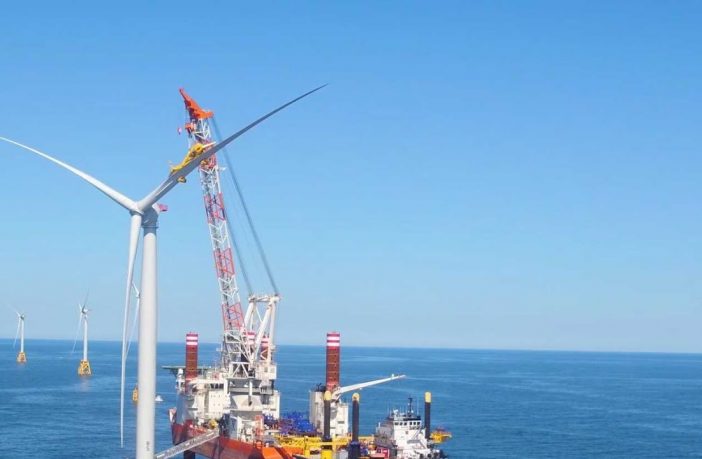The IEA finds that global offshore wind capacity may increase 15-fold and attract around $1 trillion of cumulative investment by 2040. This is according to an International Energy Agency report published on Friday.
Offshore Wind Outlook 2019 is the most comprehensive global study on the subject to date, combining the latest technology and market developments with a specially commissioned new geospatial analysis that maps out wind speed and quality along hundreds of thousands of kilometres of coastline around the world. The report is an excerpt from the flagship World Energy Outlook 2019, which will be published in full on 13 November.
This is driven by falling costs, supportive government policies and some remarkable technological progress, such as larger turbines and floating foundations. That’s just the start – the IEA report finds that offshore wind technology has the potential to grow far more strongly with stepped-up support from policymakers.
Europe has pioneered offshore wind technology, and the region is positioned to be the powerhouse of its future development. Today, offshore wind capacity in the European Union stands at almost 20 gigawatts.
The IEA adds that under current policy settings, that is set to rise to nearly 130 gigawatts by 2040. However, if the European Union reaches its carbon-neutrality aims, offshore wind capacity would jump to around 180 gigawatts by 2040 and become the region’s largest single source of electricity.
Read more: UK seabed rights to be auctioned for offshore wind farms
An even more ambitious vision – in which policies drive a big increase in demand for clean hydrogen produced by offshore wind – could push European offshore wind capacity dramatically higher.
China is also set to play a major role in offshore wind’s long-term growth, driven by efforts to reduce air pollution. The technology is particularly attractive in China because offshore wind farms can be built near the major population centres spread around the east and south of the country.
By around 2025, China is likely to have the largest offshore wind fleet of any country, overtaking the United Kingdom. China’s offshore wind capacity is set to rise from 4 gigawatts today to 110 gigawatts by 2040. Policies designed to meet global sustainable energy goals could push that even higher to above 170 gigawatts.
The United States has good offshore wind resources in the northeast of the country and near demand centres along the densely populated east coast, offering a way to help diversify the country’s power mix. Floating foundations would expand the possibilities for harnessing wind resources off the west coast.
Dr Birol launched this special report on Friday in Copenhagen, Denmark – the birthplace of offshore wind – alongside the Danish Minister for Climate, Energy and Utilities, Dan Jørgensen.
The huge promise of offshore wind is underscored by the development of floating turbines that could be deployed further out at sea. In theory, they could enable offshore wind to meet the entire electricity demand of several key electricity markets several times over, including Europe, the United States and Japan.
“Offshore wind currently provides just 0.3% of global power generation, but its potential is vast,” Dr Birol said. “More and more of that potential is coming within reach, but much work remains to be done by governments and industry for it to become a mainstay of clean energy transitions.”
Governments and regulators can clear the path ahead for offshore wind’s development by providing the long-term vision, which includes careful market design, ensuring low-cost financing and regulations that recognise that the development of onshore grid infrastructure is essential to the efficient integration of power production from offshore wind.
What’s more, huge business opportunities exist for oil and gas sector companies to draw on their offshore expertise. An estimated 40% of the lifetime costs of an offshore wind project, including construction and maintenance, have significant synergies with the offshore oil and gas sector. That translates into a market opportunity of $400 billion or more in Europe and China over the next two decades.
Author: Ashley Theron
This article was originally published on ESI Africa and is republished with permission with minor editorial changes.















